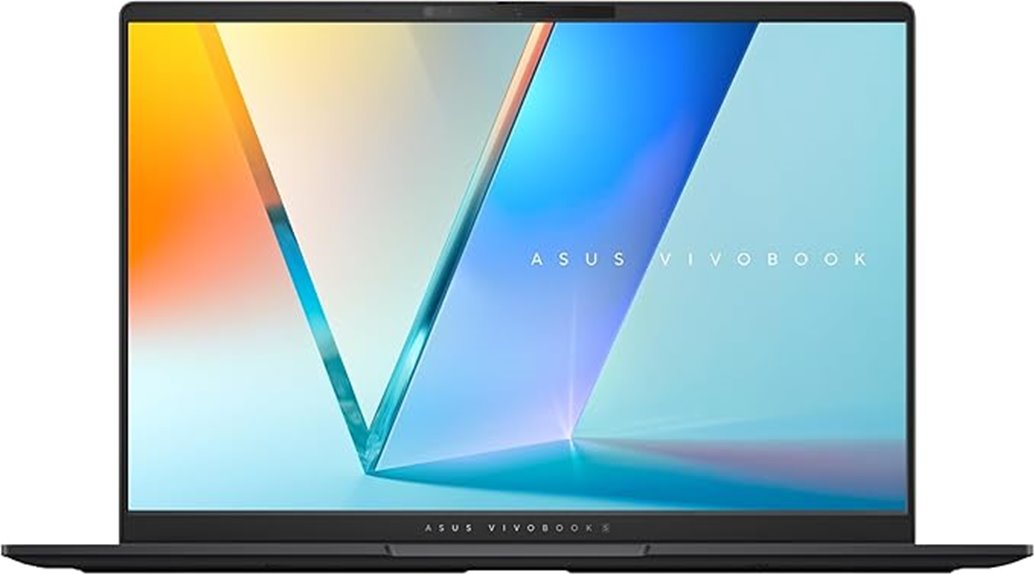Best Laptops for Mechanical Engineering (Top 5 Picks for 2025)
For mechanical engineering students in 2025, top picks include the Apple 2024 MacBook Pro with M4 Chip for unmatched performance, the Acer Swift X 14 with robust Intel and NVIDIA power, and the Apple 2025 MacBook Air for portability and battery life. The ASUS Vivobook S 14 stands out for its impressive Ryzen processor, and the Samsung Galaxy Book4 Pro offers lightweight design and high RAM. There’s more to consider for optimal choices tailored to your needs.
In the interest of full disclosure, we would like to inform you that some links on our website are affiliate links. By clicking on these links and completing a purchase from our partners, we may receive a nominal commission at no extra cost to you. Rest assured, our affiliate partnerships do not compromise the integrity of our editorial content or product evaluations. For further clarification, kindly refer to our comprehensive affiliate disclosure.
Table of Contents
What Are the Best Laptops for Mechanical Engineering to Buy This Year?
Here are my top picks for the best laptops for mechanical engineering, you can consider this year.
Apple MacBook Pro Laptop with M4 Chip (14.2-inch, 16GB, 512GB SSD)
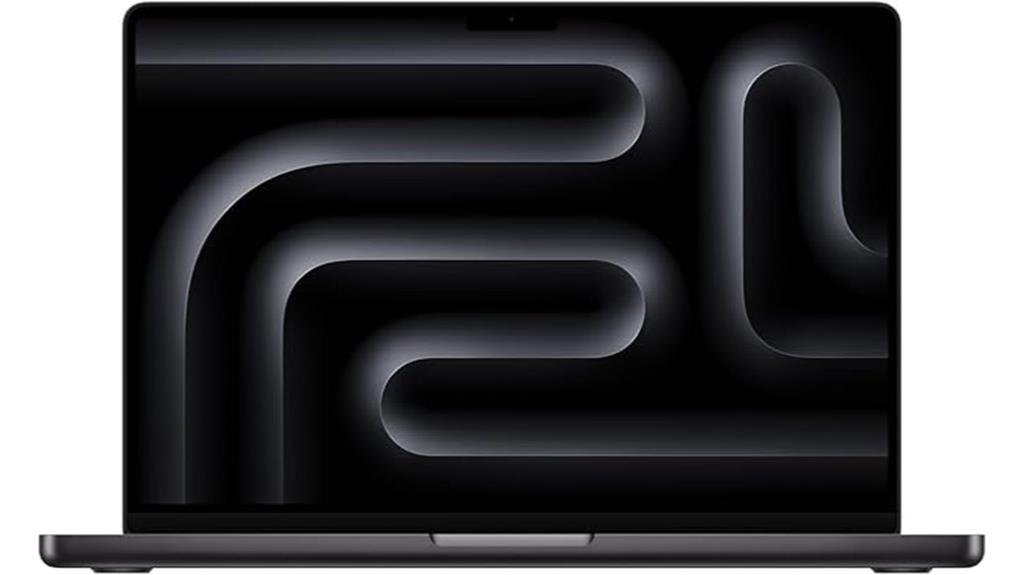
The Apple 2024 MacBook Pro with the M4 chip is an exceptional choice for mechanical engineering students who demand high performance and reliability. With its 10-core CPU and GPU, you’ll experience lightning-fast multitasking, making it perfect for running demanding applications like CAD software. The 14.2-inch Liquid Retina XDR display ensures stunning visuals, boasting peak brightness of 1600 nits. Plus, the all-day battery life means you won’t be tethered to an outlet. Integrated with Apple Intelligence, it streamlines your workflow and enhances privacy. This laptop seamlessly connects with other Apple devices, creating a cohesive experience for your academic needs.
Best For: Mechanical engineering students who require high performance, reliability, and seamless integration with other Apple devices.
Pros:
- Exceptional multitasking capabilities with the 10-core CPU and GPU, ideal for running demanding applications like CAD software.
- Stunning visuals on the 14.2-inch Liquid Retina XDR display with peak brightness of 1600 nits.
- All-day battery life allows for productivity without being tethered to an outlet.
Cons:
- Higher price point compared to other laptops in the same category.
- Limited upgrade options for memory and storage after purchase.
- May not support some niche engineering software that is designed for Windows.
Acer Swift X 14 Laptop (SFX14-72G-77NJ)
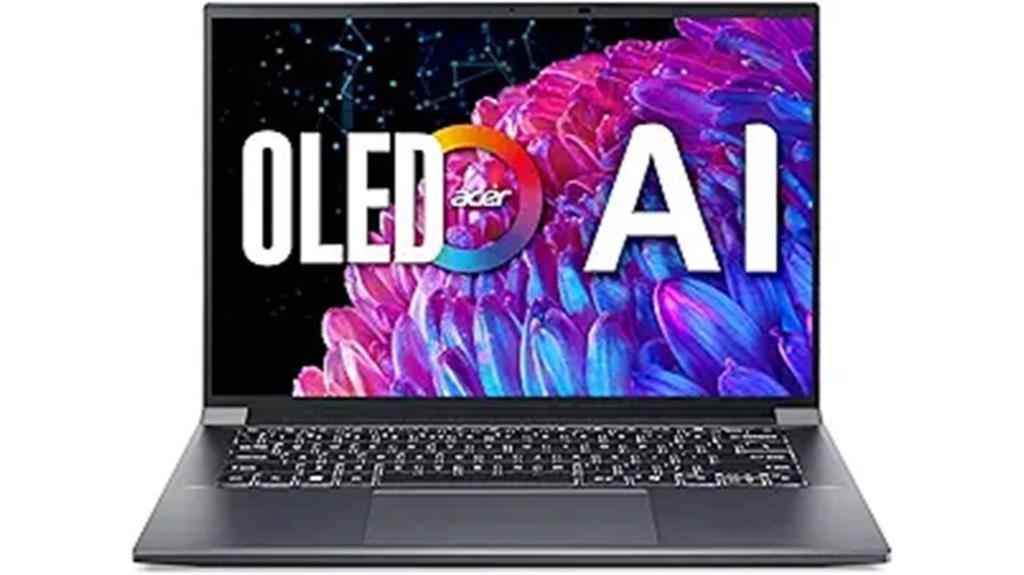
For mechanical engineering students needing robust performance, the Acer Swift X 14 (SFX14-72G-77NJ) stands out with its powerful Intel Core Ultra 7 processor and NVIDIA GeForce RTX 4060 GPU. This laptop supports graphically demanding software, ensuring efficient multitasking with 16GB of memory and a 1TB SSD. The stunning 14.5-inch OLED display provides high resolution and color accuracy while minimizing eye strain. You’ll appreciate the 1080p webcam and AI-driven collaboration tools for seamless communication. Plus, with advanced connectivity options, including Wi-Fi 6E, you’re set for fast, reliable connections throughout your engineering projects.
Best For: Mechanical engineering students and professionals who require robust performance and advanced graphics capabilities for demanding software applications.
Pros:
- Powerful Intel Core Ultra 7 processor and NVIDIA GeForce RTX 4060 GPU enhance performance for graphically intensive tasks.
- High-resolution 14.5-inch OLED display with excellent color accuracy and reduced eye strain for prolonged use.
- Advanced collaboration features, including a 1080p webcam and AI noise reduction, support seamless communication.
Cons:
- The laptop’s compact design may limit upgrade options for some components.
- Battery life may be impacted by the high-performance specifications, especially during intensive tasks.
- The price point may be higher compared to other laptops with similar specifications.
Apple 2025 MacBook Air 15-inch Laptop with M4 Chip
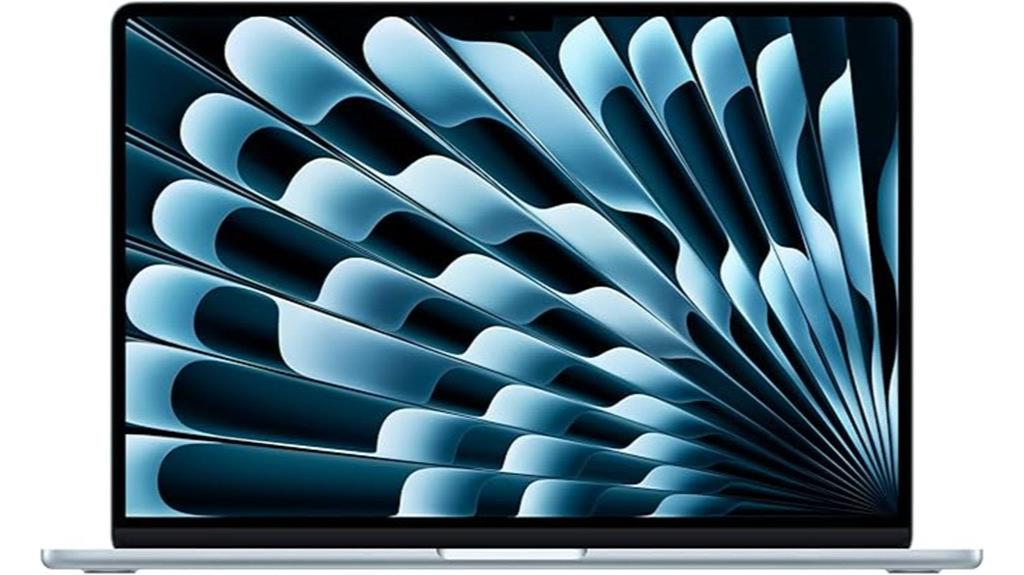
Engineers will appreciate the Apple 2025 MacBook Air 15-inch Laptop with M4 Chip for its impressive performance and speed, making it ideal for multitasking, video editing, and complex software applications. With up to 18 hours of battery life, you can work seamlessly whether plugged in or on the go. The 15.3-inch Liquid Retina display supports a billion colors, enhancing your visuals in every project. Plus, the 12MP Center Stage camera and advanced audio setup ensure clear communication and immersive sound. With robust connectivity options, including Thunderbolt 4 ports, this laptop truly elevates your engineering experience while safeguarding your data.
Best For: Engineers and creative professionals looking for a powerful, versatile laptop with exceptional performance and display quality.
Pros:
- High-performance M4 chip enables smooth multitasking and efficient handling of demanding tasks such as video editing and gaming.
- Stunning 15.3-inch Liquid Retina display with support for a billion colors enhances visual clarity for design and media projects.
- Long battery life of up to 18 hours allows for uninterrupted productivity whether at home or on the go.
Cons:
- Limited to two Thunderbolt 4 ports, which may require additional adapters for users needing more connectivity options.
- Potentially higher price point compared to other laptops in the market, which may deter budget-conscious buyers.
- Lack of upgradeable components means users cannot easily modify RAM or storage after purchase.
ASUS Vivobook S 14 OLED Slim Laptop (M5406WA-DS76)
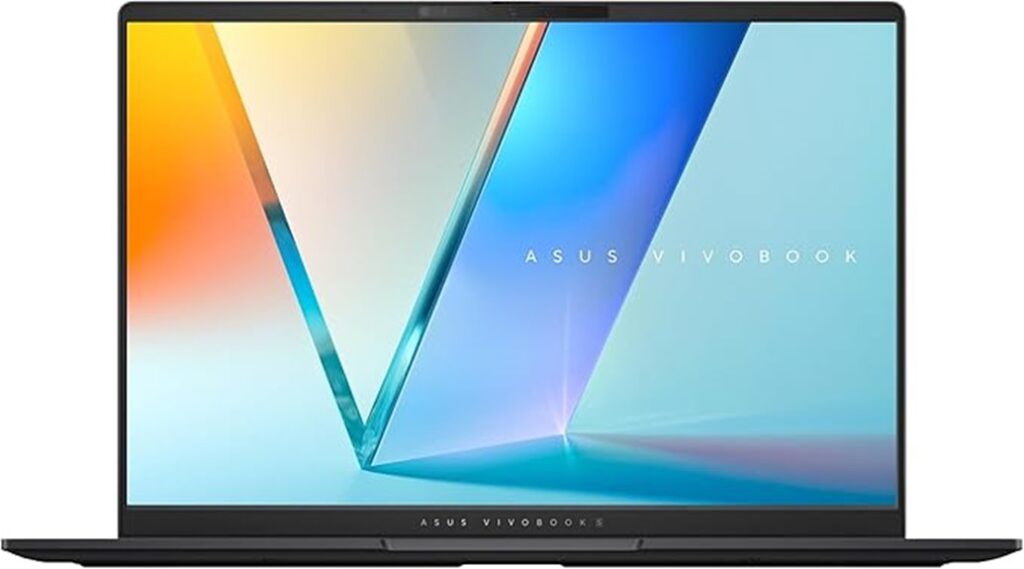
With its powerful AMD Ryzen 9 365 processor and impressive 24GB LPDDR5X RAM, the ASUS Vivobook S 14 OLED Slim Laptop (M5406WA-DS76) stands out as an ideal choice for mechanical engineering students who need robust performance for demanding software applications. The 14” 3K OLED display offers stunning visuals with a 120Hz refresh rate and vibrant colors. Weighing just 2.87 lbs and measuring 0.63” thick, it’s incredibly portable. You’ll also appreciate the customizable RGB backlit keyboard that enhances your typing experience. With ample connectivity options, including multiple USB ports and an HDMI, it’s designed for productivity on the go.
Best For: The ASUS Vivobook S 14 OLED Slim Laptop is best for mechanical engineering students requiring high performance for demanding software applications.
Pros:
- Exceptional performance with the AMD Ryzen 9 365 processor and 24GB LPDDR5X RAM.
- Stunning 14” 3K OLED display with a 120Hz refresh rate for vibrant visuals.
- Lightweight and portable design, making it easy to carry for students on the go.
Cons:
- Limited storage capacity with only a 512GB SSD, which may not suffice for extensive engineering projects.
- The customizable RGB backlit keyboard may not appeal to all users who prefer a more traditional aesthetic.
- Higher price point compared to other laptops with lower specifications.
Samsung Galaxy Book4 Pro Business Laptop (NP944XGK-KG4US)
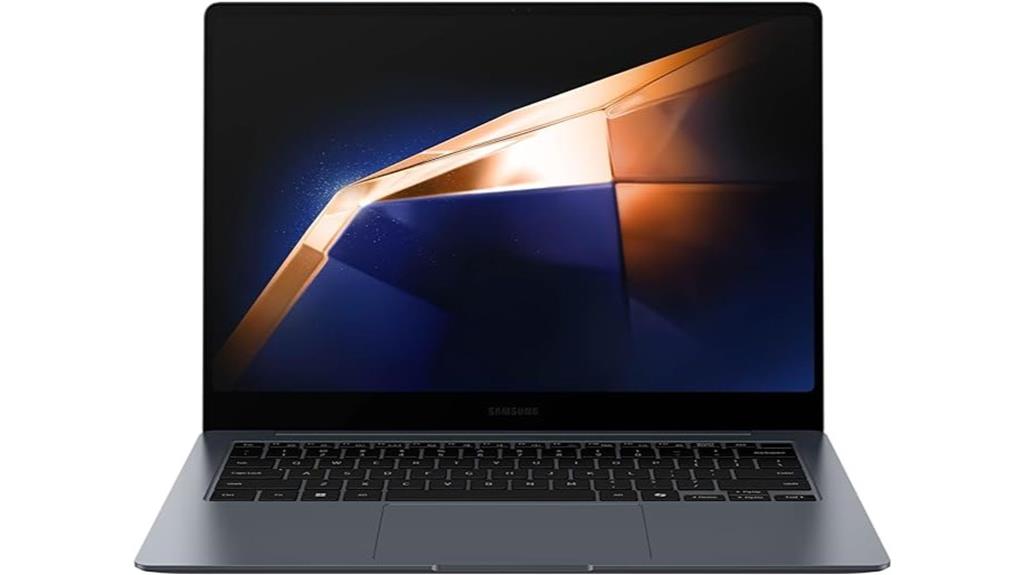
The Samsung Galaxy Book4 Pro Business Laptop (NP944XGK-KG4US) stands out as an excellent choice for mechanical engineering students who need a reliable, high-performance machine. With its Intel Core Ultra 7 processor and 32GB RAM, multitasking becomes effortless. The stunning 14-inch 3K AMOLED touchscreen offers brilliant visuals, perfect for detailed engineering designs. Weighing just 2.71 lbs, it’s incredibly portable for on-the-go use. Fast charging ensures you won’t be tethered to an outlet for long, making it ideal for busy schedules. While its price may be steep, the robust features and sleek design make it a worthy investment for your studies.
Best For: Mechanical engineering students who need a high-performance, portable laptop for multitasking and detailed design work.
Pros:
- Exceptional performance with Intel Core Ultra 7 processor and 32GB RAM for efficient multitasking.
- Stunning 14-inch 3K AMOLED touchscreen provides brilliant visuals for engineering designs.
- Lightweight design (2.71 lbs) and fast charging capabilities make it ideal for on-the-go usage.
Cons:
- Higher retail price ($1749) compared to competitors with similar specs.
- Limited RAM upgrade options in the US, Canada, and UK, capped at 16GB.
- OEM SSD from Western Digital perceived as low quality relative to the price point.
READ MORE: Best Laptop for Office Work at Home, Best Laptop for Insurance Adjusters, Best Laptop for Data Scientist, Best Laptop for Data Analytics, Best Laptop for Investment Banking, Best Laptop for Social Media Marketing, Best Laptop for Music Creation, Best Laptop for Chemical Engineering, Best Laptop for Dual Monitor Setup, Best Laptop for 2d Animation
Factors to Consider When Choosing the Best Laptops for Mechanical Engineering
When choosing a laptop for mechanical engineering, you need to think about several key factors. Processing power and graphics performance are crucial for running demanding software smoothly. Additionally, consider display quality, battery life, and portability to ensure your laptop meets your study and project needs.
Processing Power Requirements
Choosing a laptop for mechanical engineering involves understanding the importance of processing power, especially since you’ll frequently use demanding software like CAD and simulation tools. A minimum of a quad-core processor is essential for running these applications efficiently. For better multitasking and performance, consider higher-end options like hexa-core or octa-core processors. Pay attention to clock speeds; higher GHz means faster processing during intensive tasks like 3D modeling. Additionally, ensure your laptop has at least 16GB of RAM to handle large files and facilitate smooth multitasking. While dedicated graphics processing units (GPUs) enhance graphical performance, your primary focus should be on a robust processor that can manage complex calculations and rendering tasks effectively.
Graphics Performance Needs
While processing power lays the foundation for running complex engineering software, graphics performance plays a vital role in ensuring smooth operation and effective visualization. As a mechanical engineering student, you’ll often rely on demanding applications like CAD, simulations, and rendering tools. A dedicated GPU from brands like NVIDIA or AMD can vastly improve graphics rendering speed, helping you manipulate 3D models seamlessly. Look for laptops with higher VRAM to support more complex datasets and detailed designs. Additionally, consider display resolution and refresh rates; higher specs, like 2880 x 1800 resolution and 120Hz refresh rates, enhance clarity. Finally, AI-powered GPU features can optimize performance for specific tasks, making real-time rendering and data analysis more efficient in your engineering projects.
Display Quality Considerations
As you dive into the world of mechanical engineering, the quality of your laptop’s display can significantly impact your design and visualization tasks. Opt for higher resolutions like 2880 x 1800 or 3840 x 2160 for clearer, more detailed drawings. Brightness is key too; aim for at least 400 nits to ensure visibility in different lighting, with some displays reaching up to 1600 nits for outdoor use. Consider an aspect ratio of 16:10 for 12.8% more viewing area compared to 16:9, which boosts productivity. Look for displays with 100% DCI-P3 coverage for vibrant, accurate colors. Lastly, a high refresh rate of 120Hz and low response time of 0.2ms can enhance the fluidity of your animations and simulations, improving your overall experience.
Battery Life Expectations
Display quality plays a vital role in your work, but battery life is equally important, especially for mechanical engineering students who often find themselves in classes, labs, or on-the-go. Aim for a laptop with at least 8 hours of battery life to ensure you can work uninterrupted during lengthy sessions. Ideally, look for models boasting all-day battery life, around 12 to 18 hours, to enhance productivity without constant charging breaks. Fast charging capabilities can also be a game-changer, providing quick power boosts when you need them most. Remember, demanding software may impact battery performance, so factor this in when choosing. Efficient power management features can extend battery life during intensive tasks like simulations or 3D modeling, ensuring you stay productive.
Portability and Weight
When you’re a mechanical engineering student, portability and weight become crucial factors in choosing a laptop. You’ll often find yourself moving between classes, labs, and job sites, so aim for a model that weighs between 2.5 and 3.5 lbs. A slim profile—ideally under 0.7 inches thick—makes it easier to slip your laptop into a backpack without adding unnecessary bulk. Look for laptops with robust build quality to ensure they can withstand the rigors of constant travel. Battery life is another key consideration; you’ll want at least 8 hours on a single charge for uninterrupted work sessions. Balancing portability with performance is vital, as you’ll need powerful processors and ample memory for demanding engineering applications.
Connectivity Options Available
Connectivity is a vital aspect to consider when selecting a laptop for mechanical engineering. You’ll want multiple connectivity options like USB-C, Thunderbolt, and HDMI ports to easily connect to external monitors and peripherals. A microSD card reader can be handy for transferring files from cameras or other devices often used in your projects. Look for laptops equipped with Wi-Fi 6E for faster and more reliable wireless connections, ensuring seamless collaboration and data transfer. Additionally, USB 3.2 ports significantly boost data transfer speeds, which is crucial for managing large engineering files. Integrated features like Bluetooth 5.3 enhance connectivity with wireless devices, improving your overall experience while tackling engineering tasks.
Frequently Asked Questions
What Is the Average Battery Life of These Laptops?
The average battery life of these laptops typically ranges from six to twelve hours, depending on usage and specifications. You’ll want to choose one that meets your needs for extended performance during classes and projects.
Do These Laptops Support CAD Software?
Yes, these laptops support CAD software. You’ll find powerful processors and dedicated graphics cards, ensuring smooth performance for complex designs. Just make sure to check system requirements for specific CAD applications you plan to use.
Can I Upgrade the RAM on These Models?
Yes, you can upgrade the RAM on many of these models. Just check the specifications and ensure they have accessible slots. This enhancement will improve performance, especially for demanding applications and multitasking.
How Do These Laptops Compare in Terms of Weight?
You’ll find that weight varies significantly among these laptops. Some are lightweight and portable, perfect for on-the-go use, while others are heavier, offering more power but less convenience for carrying around daily.
Are There Student Discounts Available for These Laptops?
Yes, many manufacturers offer student discounts on laptops. You should check with your school’s resources, as well as the laptop brand’s website, to find specific deals that can save you money on your purchase.
My Final Opinion
In conclusion, selecting the right laptop as a mechanical engineering student is crucial for your success. The models we’ve reviewed offer a blend of power and performance tailored to your needs. Whether you prefer the sleek design of the MacBook Pro or the versatility of the Acer Swift X, there’s a perfect fit for everyone. Keep in mind the factors we discussed, and you’ll be well-equipped to tackle your engineering challenges with confidence. Happy studying!
